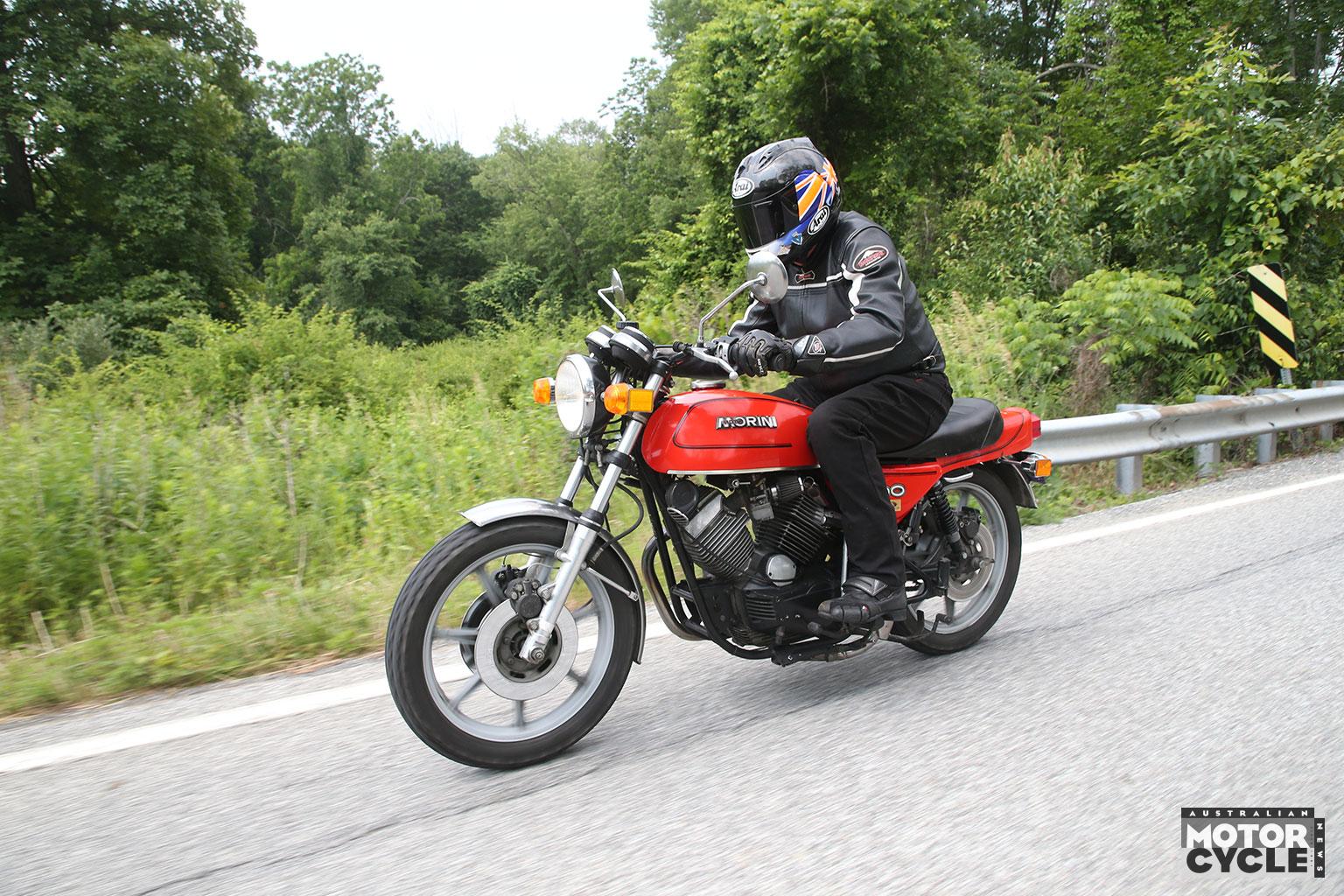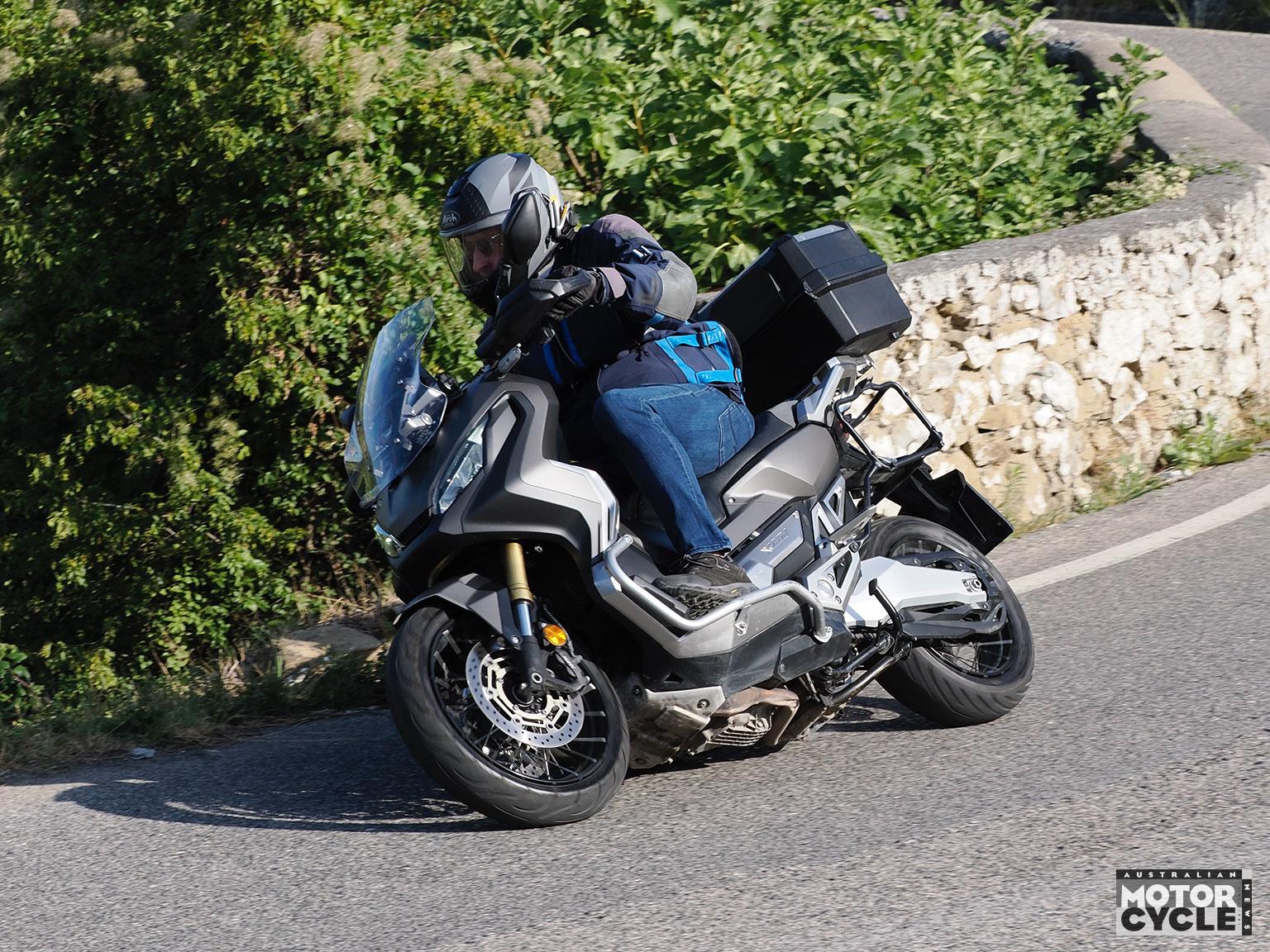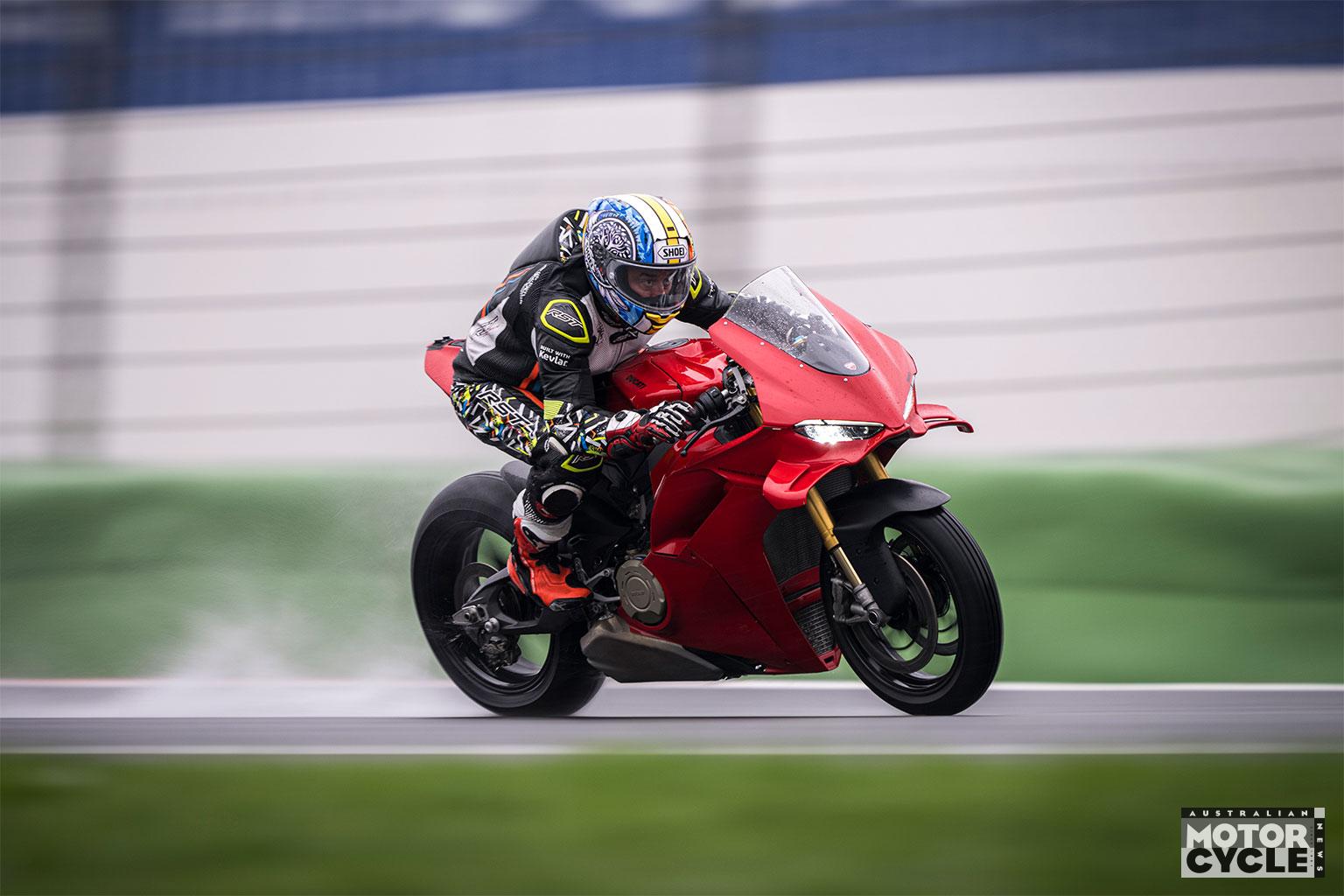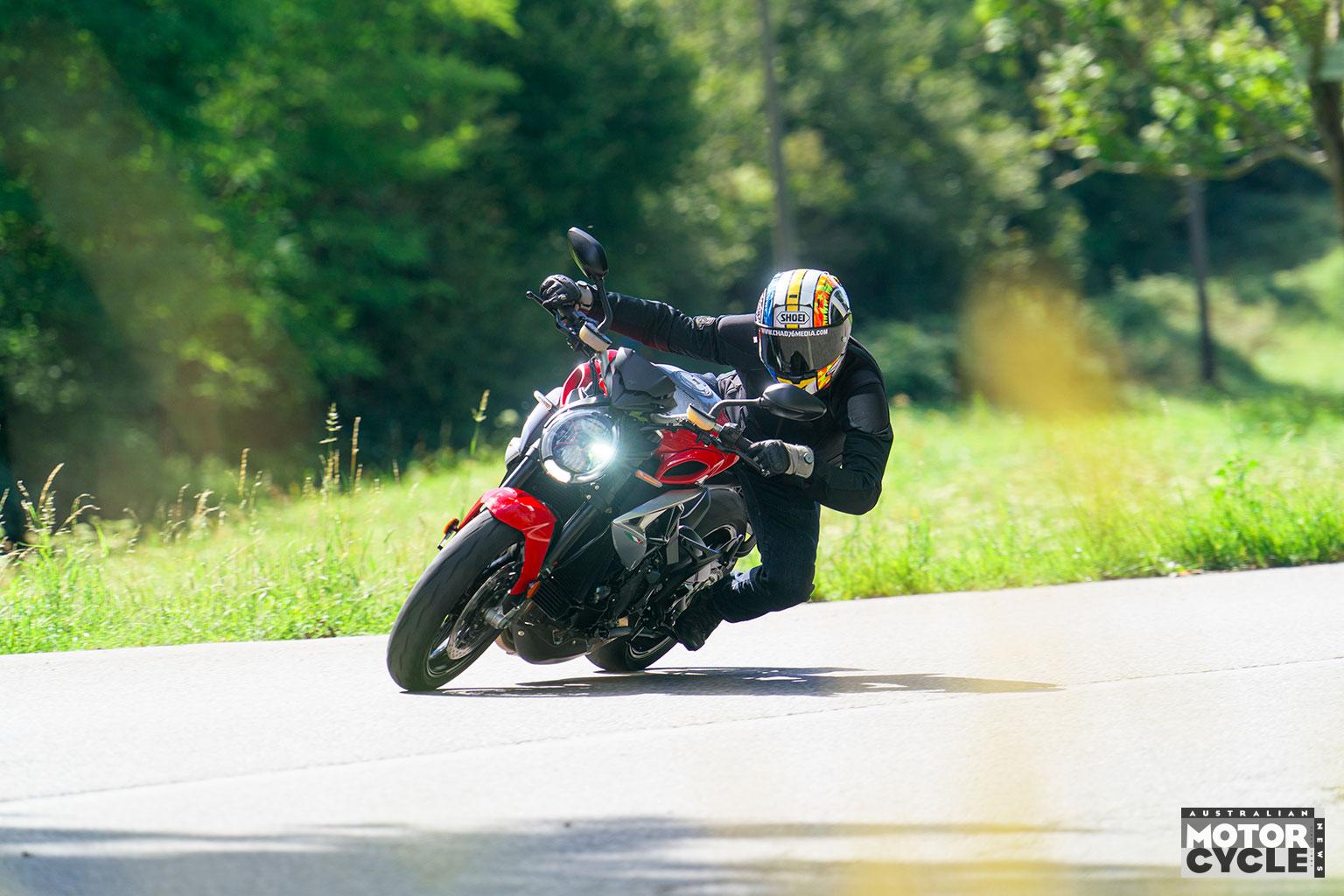We sent Roothy to the Aussie launch of the Indian Scout. This is what he thinks of it…
A tribe of new Indian Scouts on the Gold Coast? Wow, I haven’t been so excited about a new model launch since my first one; Harley’s new Softail in 1984! And that finished with a sausage sizzle out the back of Frasers, not a Japanese restaurant on the Goldie. Things have changed in the last 40 years, huh? Which reminds me, I bought a new Softail after that release. Will I soon be thinking I need a new Indian?
The buzz started when I read Kel’s very comprehensive world launch report (AMCN Vol 73 No 21) back in May. That’s because it read exactly like the bike much of the world needs – a motorcycle for just about everybody. More than that, the specs promised handling, power and looks in a bike that wasn’t huge. In fact everything I could see had me thinking the pendulum had finally swung away from purpose-built bikes to bikes that could do it all. Which was about where we were in 1984, come to think of it…
The real excitement was the Indians themselves. Take into account the last Scout I’ve ridden is the 1942 741 model I bought Karen for our 20th anniversary. Now, apart from being a shifty way to add to the collection, it’s also a hand-shift three-speed with the road manners of a pig on a rope. Amazingly there are design cues in the new models that were developed way back then, the ‘Indian’ look.

What surprised me was that while the look is there, the new MY25 Scout (yes it’s still 2024 but Indians get out of bed earlier apparently) is a totally modern motorcycle. And best of all, it’s a motorcycle that fits. Oh sure, I know there’s plenty of room for big barges out on the highway and I’ll never give up my trailbike around town, but if I had to own one bike to do it all?
Yep, I reckon it might be a new Indian Scout. Probably the Classic, with floorboards, bags and a pillion seat… in Sunset Red. Then I’d take it home, bung on a hot exhaust to grab more of that V-twin burble, and ride the beejeesus out of it. Because that’s what these babies are, rider’s bikes.
It starts with the engine. Harley’s traditionally used a 45-degree V twin. Ducati’s favoured angling their cylinders at 90 degrees. Indian’s Scout runs a 60 degree vee and, while that number alone wouldn’t do it, the engine itself fits between those two beautifully.
The cadence is smooth, the exhaust note rumbles and, most importantly to this old bush mechanic, it feels and sounds like it’s going to last. Interestingly, Harley’s Revolution Max 1250 engine, as used in the Pan American, packs a whole lot of the same specs but somehow manages to sound remarkably less robust. You can hear and feel the difference a decade’s worth of evolution has made to the new Speed Plus engine.
The 1250 Scout runs dual overhead cams, four valves per cylinder, a 12.5:1 compression ratio, liquid cooling and a constant-mesh six-speed gearbox. Indian says this engine is ‘all new’ but it’s really the second development of the 1133cc Scout first introduced in 2014, which featured liquid cooling and an aluminium frame. That engine was reincarnated as the 1133cc Power Plus but still ran the big radiator and alloy frame. The MY25 Scouts see it upped to 1250cc with plenty of internal changes that make for a 17 percent overall power increase at 78kW (105hp) and a new name, the Speed Plus. Torque’s impressive at 109Nm at 6000rpm but it’s the way the new engine flattens the torque curve across the range from a tad over idle that’s really impressive.

First gear’s pretty high thanks to noise rules or something, but the clutch is light and this engine handles lift off without any dramas. The six-speed ’box isn’t as smooth as the mainstream Japanese but it’s a world away from the clunk fest over at Harley. There’s no complaints here at all; shifting’s easy and the ratios beautifully spaced.
Get a load of the new girl’s radiator! The styling people have done a wonderful job melding what used to be the ugliest part of an exposed engine into the front frame area to the point where it’s not obtrusive at all. This is the essence of the MY25 models; constant evolution with an eye on performance as much as style.
‘Not obtrusive’ describes the Scout’s overall feel, actually, which is the opposite of its eye-catching looks. First, it’s easy to chuck a leg over the seat (around 650mm) and paddle around a tight parking space. At 237kg (dry) it’s on par with a new Triumph Bobber, and a pub meal bigger than a Kwaka nine or a Honda four for those old enough to remember when they were the duck’s nuts. Add in the natural low centre of gravity and narrow nature of a V twin and there’s nothing daunting here despite making twice the power of said old dungers.
This is where motorbikes used to be before the ‘size is everything’ race took over. It’s also beautifully balanced with 16-inch wheels back and front (although the Sport and 101 get 19-inch front rims) and ‘normal’ tyre sizes compared to the balloons some manufacturers fit.
Such a low seat height means you’ll be scraping pretty early but the super stiff frame, a heap of development on those ‘lay down’ rear shocks and the 41mm fork means that when you do, it’s predictable and easily managed. I scraped plenty during our day’s ride but then I was following Isle of Man TT winner Cam Donald. Or trying too…

The Scout tips into corners naturally and feels confident all the way. This could be the easiest riding motorcycle I’ve ever tried so I’m going to give the handling as stock a big tick. Same with the brakes. The single 298mm discs back and front – with a dual piston caliper up front – are perfectly matched to the weight of the bike and then there’s ABS on top of that anyway if you’re pushing limits. The special Scout 101 is a class above again – can I interest you in some pre-scraped knee sliders?
On the ride we had about 20 bikes to choose from, covering all five models and all fitted out to different specs. All manufacturers offer options these days, but what Indian has done that’s really clever is make everything fit right across the Scout range. The last models we got in Australia, the MY23 bikes, used the alloy frame which limited the interchangeability of parts and accessories. Thanks to the steel frame everything fits everything now. They have seats that sit you farther back, offer more padding, drop the seat height or leave the pillion at home.
Similarly there’s so many variations in handlebars and risers that if you can’t make a Scout fit you might consider auditioning at the circus. The first Scout I hopped on was a Bobber with forward ’pegs and low ’bar; great for cruising GC’s Cavell Avenue but with all the comfort of a prayer mat. By lunchtime I’d tried out mid-mount ’pegs, forward controls and good old floorboards with a range of handlebars and riser heights. Apparently there’s over 30 ergonomic options out of the 100 accessories available already. There’s a ‘build your own’ thing going on here which is perfectly suited to where Indian itself sees the Scout heading.

Where’s that apart from out of the showrooms? To the customisers. That’s the given excuse for trading the old aluminium frame – untouchable with a torch – to the new steel-tube job and, personally, I’m happy with that. Customising is huge business in the US of A where people will do anything to look different within the fashion guidelines of whatever frolic they’re in to.
But fashion guidelines bring me to the quibbles I have with the new Scout, at least the Aussie versions anyway. The American Scouts with bobbed mudguards (all models except the Scout Classic) feature a side mounted number plate bracket that suits the bobber look. Possibly it’s not legal in Australia because the models on release all had a bar set back from the chopped guard that mounts the plate – and immediately makes it look like something’s missing. No worries, if you’re into customising, you’ll sort that quick. And while the front guard might look cool, it offers no protection for that radiator tucked neatly between the front frame tubes. Under most circumstances that’ll just mean the odd rock chip but a clay road on a wet day and you’ll be clogging fins faster than a sous chef in a Japanese restaurant. Please note this is from a bloke who drills his front mudguards to take a rubber flap…
Then there’s the ’bar-mount mirrors. For some reason all the bikes on the launch – except the Classic – had ’bar mounts with mirrors swung down. No doubt someone thinks this looks cool but you can’t see a bloody thing without looking down. Mirrors need to be in the rider’s field of vision. It’s easy to swap them to upright. I just didn’t have any tools on the day…

Ah, tech. As a bloke first schooled with a nib and ink pot – I kid you not – I’m not strong on the tech stuff but I’m not sure you have to be because the models I rode with the Tech Pack were easy to navigate. All the info – speed, odometer, GPS, fuel gauge, tacho – plus more were on the neat, round speedo, which cycled through a host of different-looking screens. The GPS and trip info stuff is accessed through Indian’s Ride Command app and a demo of that showed it was idiot proof.
Given the number of bikes we had on test, what wasn’t idiot proof was the old ‘who’s got the fob?’ thing. At least the yanks had them zip-tied under the seats at the world launch…
In Australia ignition keys, an analogue speedo, fuel gauge and non switchable ABS come with the base model (standard) while the top-of-the-range Limited Plus Tech pack (we don’t get the middle ranked ‘Limited’ model) gets the touchscreen dash, GPS navigation and keyless ignition. But, thanks to the fact that everything’s interchangeable, I can have a key ignition and a touch screen dash with connectivity. And wire-spoked wheels instead of alloys, a full back guard instead of a bobbed job, high ’bars and a plush seat. Naturally there’s a few fittings required and the expense of the accessories but it’s great that anything’s possible.
When she came back from San Francisco, Kel called the new Scouts ‘an American cruiser for just about anybody’. I’ll take that a step farther, I reckon the Scout range with its custom potential has given us motorcycles for just about everybody.
If you’ve got some lingering doubts about American motorcycles, try a Scout. Welcome to the future – American-made motorcycles that are nimble, fast, handle and stop and still come loaded with heritage. Bloody lovely.
PROS: The new 1250cc engine’s brilliant, compact size and true customising potential.
CONS: Awkward number-plate bracket and fuel capacity is only 13 litres across the range.
THE LINE-UP
SCOUT BOBBER

The entry point to the Scout platform, its chopped fenders, single seat and ’bar-end mirrors epitomise the moniker. It rolls on 16-inch wheels at both ends, features an all-black engine and exhaust and there’s only 51mm of travel in the rear end. From $22,995.
SCOUT CLASSIC

Aimed at the traditionalists, the Classic’s long fenders, pulled-back ’bar and chrome exhaust and engine accents match the bike’s chrome wire wheels and conventional mirrors. Like the Bobber, it rolls on 16-inch wheels but the rear shocks get 76mm of travel. From $23,495
SCOUT SPORT

Speaking to the custom scene, the Scout Sport gets 150mm ’bar risers, a machined triple clamp and a slightly higher seat back. There’s a quarter fairing, a 19-inch front wheel with machined highlights and 76mm of rear suspension travel. From $23,995
SUPER SCOUT

With a quick-release windshield and panniers as standard, the Super Scout is aimed at the touring end of the cruiser scene. It has 16-inch wire-spoked wheels, 76mm of rear travel, provision for a pillion and with your choice of tech pack. From $26,995
SCOUT 101

The cream of the crop, the Scout 101 gets more horsepower dialled in, fully adjustable suspension at both ends, a twin-disc Brembo front end and premium paint. There’s 150mm black ’bar risers, a custom-stitched solo seat and a full-fruit electronics package. From $27,995
Top of the pops!

Hubba hubba. What d’ya get when you take a Scout, add an inverted cartridge fork, dual piggyback shocks, twin Brembo calipers, pump the engine up to 111hp and add a sports fairing?
Well, Indian reckons it’s good enough to recycle one of their most famous racing names from the 1920s and call it the ‘101 Scout’. Given I didn’t get a chance to play with the suspension’s adjustability I was blown away by how good the 101 felt straight out of the box. The formula’s easy enough – take a quick, nimble and stable motorcycle and juice it right up with a skinnier, 19-inch front hoop shod with stickier rubber, as well as premium suspension and brakes. Pretty much what the fast crew have done to everything since day one. Sure the 101’s still limited by ground clearance, but if you hanker for something different to stay in front of the troops, the 101 is it.
SPECIFICATIONS
ENGINE
Capacity 1250cc
Type 60° V-twin, DOHC, four valves per cylinder
Bore & stroke 104mm x 73.6mm
Compression ratio 12.5:1
Cooling Liquid
Fueling EFI, 60mm throttle bodies
Transmission Six-speed
Clutch Wet, multi-plate
Final drive Belt
PERFORMANCE
Power 79kW (105hp) @ 7250rpm
101: 82kW (111hp) @ 7250rpm (claimed)
Torque 108Nm @ 6300rpm
101: 109Nm @6300rpm (claimed)
Top speed 185km/h (est)
Fuel consumption 6.5L/100km (avg)
ELECTRONICS
Type Not given
Rider aids ABS. 101 & Super Scout: ABS, Traction control and cruise control
Rider modes Not applicable
101 & Super: Sport, Standard & Tour
CHASSIS
Frame material Tubular steel
Frame type Double cradle
Rake 29°
Trail 123mm Bobber: 125mm
Wheelbase 1562mm
SUSPENSION
Type Indian
Front: 41mm fork, 120mm travel
101: 43mm USD fork, fully adjustable, 150mm travel
Rear: Dual shocks, preload adjustable, 76mm travel (Bobber: 51mm travel
101: Dual piggyback shocks, fully adjustable, 76mm travel
WHEELS & BRAKES
Wheels Classic & Super Scout: 40-spoke wire; Bobber & Sport: 8-spoke cast;
101: 5-spoke cast
Front: Classic, Bobber & Super Scout:
Front: 16 x 3.5 Rear: 16 x 3.5
Sport & 101: Front 19 x 3.5 Rear 16 x 3.5
Tyres Classic: Pirelli Night Dragon Bobber: MT60RS/Night Dragon
Super Scout: MT60RS
Sport & 101: Metzeler Cruisetec
Front: 130/90-16
101 & Sport: 130/60-19
Rear: 150/80-16
Brakes
Front: Single 298mm disc, twin-piston caliper
101: Twin 320mm discs, four-piston Brembo calipers
Rear: Single 298mm disc, single-piston caliper
DIMENSIONS
Weight Classic: 243kg, Bobber: 237kg, Sport :239kg, Super: 259kg, 101: 240kg (dry, claimed)
Seat height 654mm
Width Not given
Height Not given
Length Not given
Ground clearance 113mm Bobber:109mm
Fuel capacity 13L
SERVICING & WARRANTY
Servicing First: 1000km
Minor: 8000km.
Major: 16,000km
Warranty Two years, unlimited km
BUSINESS END
Price From $22,995 (ride away)
Colour options 18 options
CONTACT
indianmotorcycle.com.au











